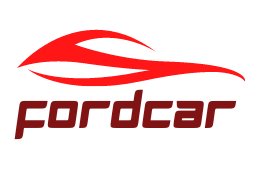5 Common Causes of Facial Bumps and How to Treat Them
Facial bumps can be a cause of concern for many individuals. While some bumps are harmless and temporary, others may require medical attention. It’s important to understand the different types of facial bumps and their causes in order to determine the appropriate course of treatment. In this article, we will explore 5 common causes of facial bumps and provide guidance on how to treat them effectively.
1. Comedones: Clogged Pores

One common cause of facial bumps is comedones, which are clogged pores. There are two types of comedones: closed comedones (whiteheads) and open comedones (blackheads). Closed comedones are characterized by a flesh-colored appearance, while open comedones appear black or brown due to exposure to air. These bumps are often caused by excess oil and dead skin cells that block the hair follicles.
To treat comedones, it is important to avoid picking or popping them, as this can lead to scarring. Instead, opt for over-the-counter acne products that contain ingredients such as salicylic acid or benzoyl peroxide. These ingredients help to calm inflammation and prevent future breakouts. Additionally, incorporating alpha hydroxy acids (AHAs) like mandelic, glycolic, and lactic acid into your skincare routine can help dissolve dead skin cells and unclog pores
2. Acne: Dealing with Different Types
Acne is another common cause of facial bumps that can take various forms. The different types of acne include comedones, papules, pustules, and nodules. Comedones are clogged pores, while papules are inflamed, small bumps that are sensitive to the touch. Pustules are similar to papules but contain pus, and nodules are hardened, deeper lesions within the skin.
It is important to avoid squeezing or picking at acne, as this can lead to scarring. Instead, use a gentle cleanser with benzoyl peroxide to minimize sebum production and choose oil-free, non-comedogenic products to prevent pore blockage. Niacinamide is also effective in reducing inflammation and improving acne symptoms. If your acne persists despite these measures, it may be necessary to consult a dermatologist or primary care doctor for further evaluation and treatment.
3. Milia: Tiny White Bumps

Milia are small, hard, flesh-toned bumps that often appear around the eyelids, cheeks, or forehead. These bumps occur when keratin and dead skin cells become trapped beneath the surface of the skin. Milia are not painful and lack the inflammation associated with acne. They are typically caused by oil-based products, excessive sun exposure, topical steroids, or genetics.
Milia usually clear up on their own, but using retinoids and chemical exfoliants can help speed up the process by shedding the dead skin and keratin buildup. However, it is important to consult a dermatologist for proper treatment, as attempting to remove milia at home can result in skin damage and scarring
4. Fungal Acne: Not Your Typical Acne

Contrary to its name, fungal acne is not actually acne but an overgrowth of pityrosporum yeast in hair follicles. It appears as small clusters of skin-colored bumps on the chest, back, or forehead. Fungal acne tends to appear in clusters and does not respond to conventional antibacterial treatments like benzoyl peroxide.
To treat fungal acne, dermatologists may prescribe oral antifungal medications such as fluconazole or topical treatments like ketoconazole cream. Over-the-counter dandruff shampoos containing selenium sulfide or zinc pyrithione have also been shown to inhibit the growth of pityrosporum yeast. Additionally, avoiding warm, moist environments and changing out of sweaty clothes promptly can help prevent fungal acne.
5. Keratosis Pilaris: Chicken Skin

Keratosis pilaris is a common skin condition characterized by small, rough bumps that resemble goosebumps. It typically appears on the thighs, upper arms, and cheeks. The condition occurs when dead skin cells block the hair follicles, resulting in rough and dry patches of skin.
To manage keratosis pilaris, treatments such as retinoids, glycolic acid, and salicylic acid can help to exfoliate the skin and unclog the hair follicles. Moisturizers or ointments containing ingredients like lanolin, petroleum jelly, or glycerin can also be used to hydrate the skin and smooth out rough patches.

